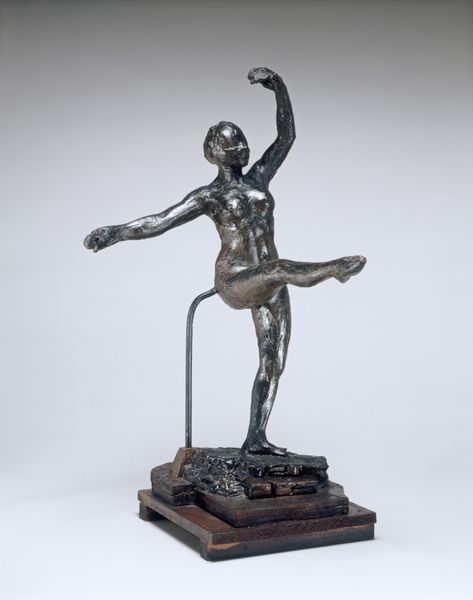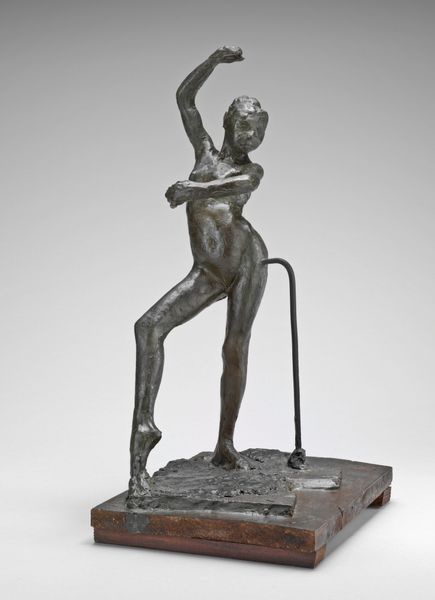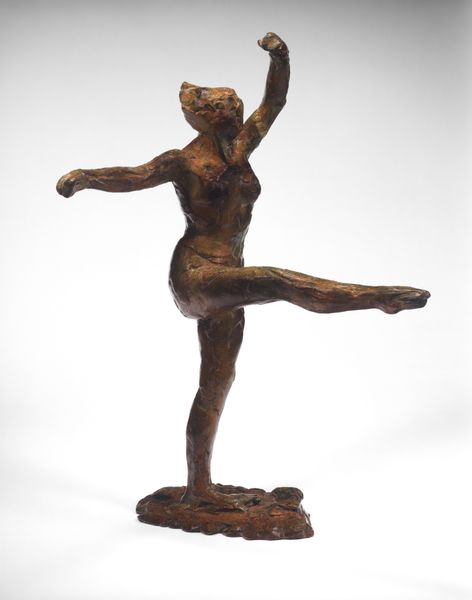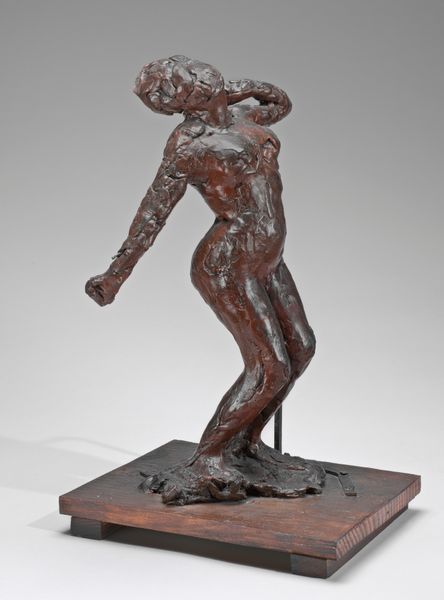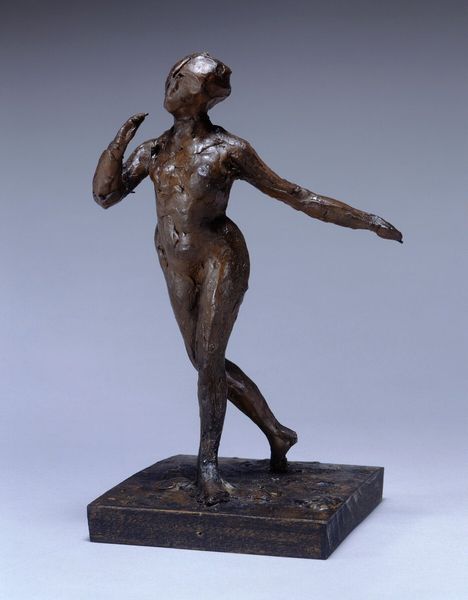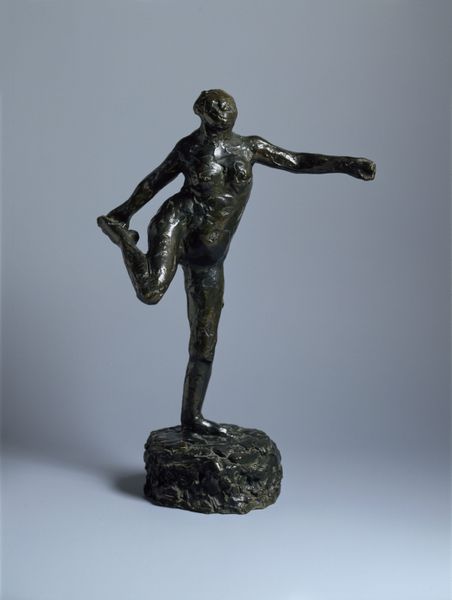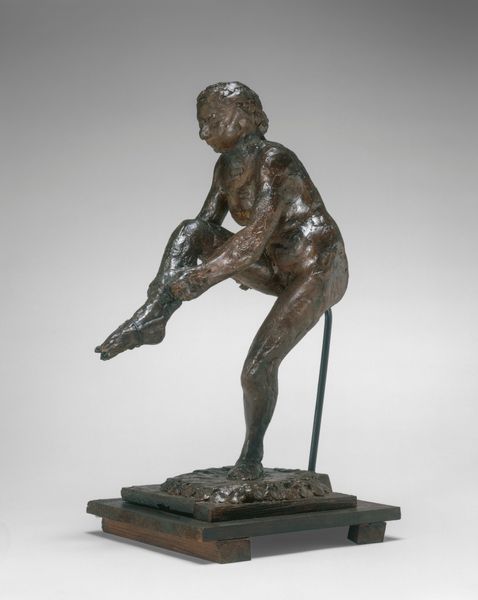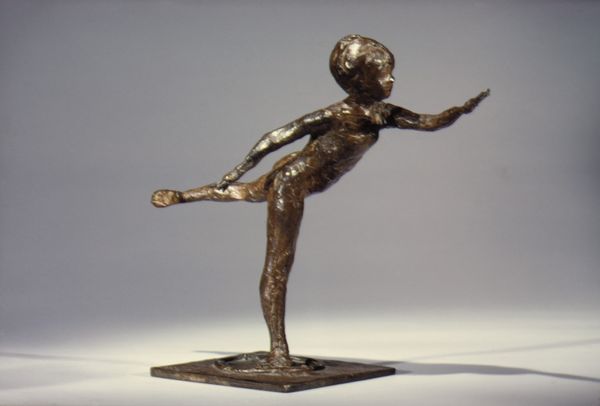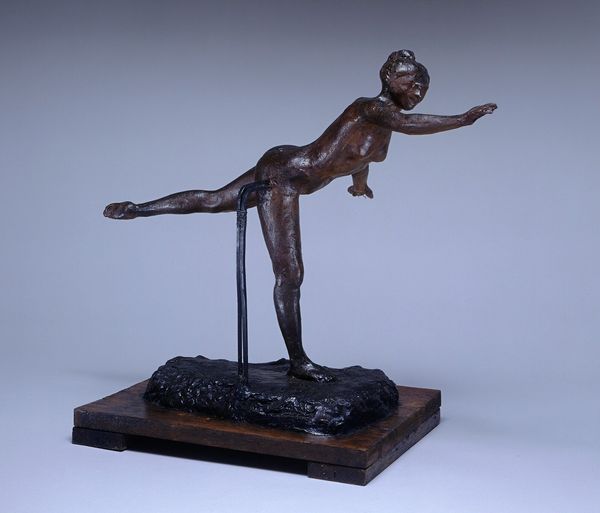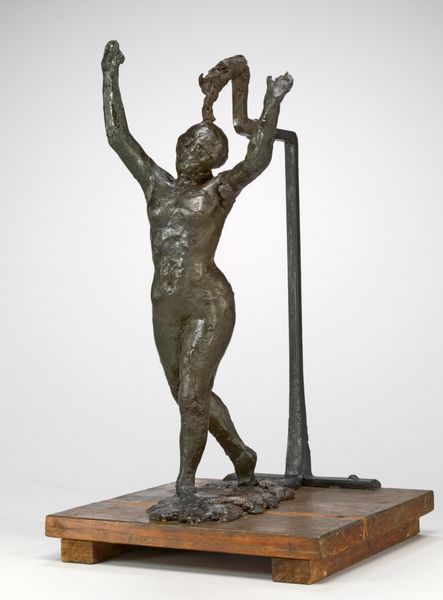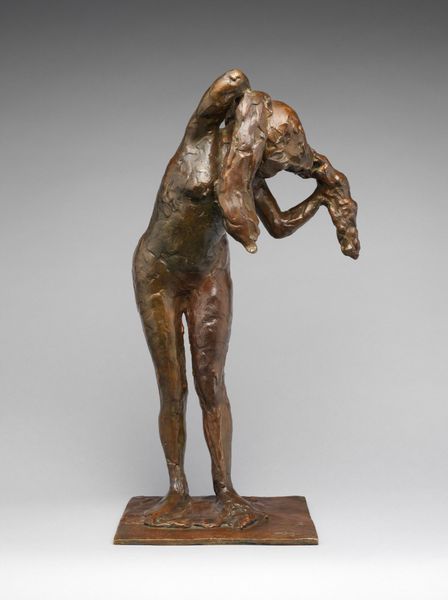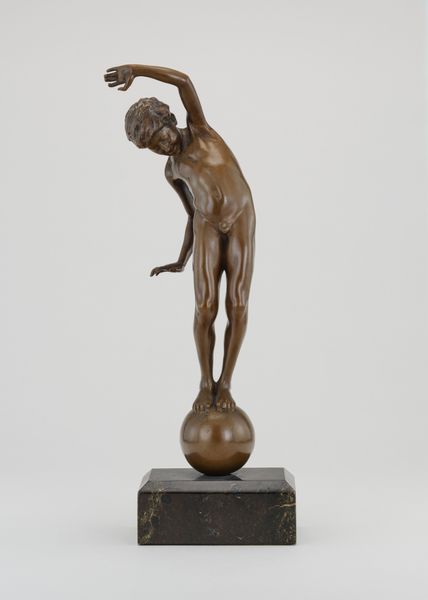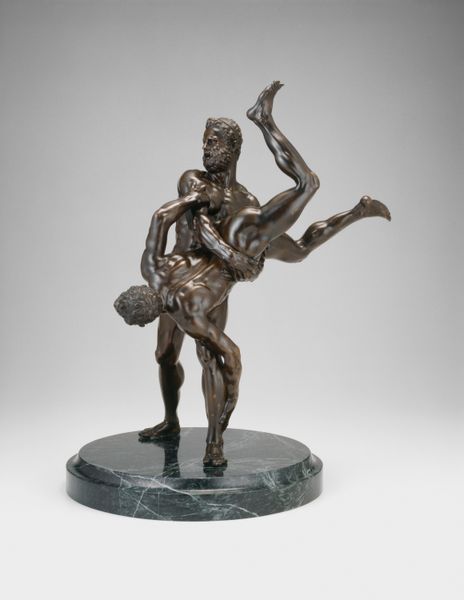
sculpture
#
statue
#
3d sculpting
#
rounded shape
#
sculpture
#
3d character model
#
sculptural image
#
unrealistic statue
#
sculpture
#
charcoal
#
3d character modeling
#
graphite
#
statue
Dimensions: overall without base: 57.7 x 35.7 x 32 cm (22 11/16 x 14 1/16 x 12 5/8 in.) height (of figure to top of proper left hand): 54.4 cm (21 7/16 in.)
Copyright: National Gallery of Art: CC0 1.0
Curator: Here we have Edgar Degas’ sculpture, “Fourth Position Front, on the Left Leg,” created somewhere between 1885 and 1890. Editor: She looks a bit…precarious? All that weight balanced on one leg, those arms so high. It's like she's perpetually on the verge of tipping over, reaching for something just out of grasp. Curator: It's crucial to remember the historical context. Ballerinas were often perceived as working-class women, their bodies a commodity in the art world. Degas often depicted them with a realism that diverged from the romantic ideal. Editor: That makes sense. It’s not like a glamorous, polished monument, is it? There’s a rawness here, a vulnerability even in the pose's supposed strength. It almost feels voyeuristic. Curator: Some interpret this as Degas capturing a candid, backstage moment, demystifying the performance. The physicality, the sheer labor, is palpable. Think of how these dancers’ bodies were often subjected to intense scrutiny and control. Editor: Exactly. And it's not just about what she's doing, but what’s being *done* to her, you know? This constant pressure to achieve an impossible ideal… the objectification is screaming at you! Still, in that frozen position, is also the determination to be perfect for the show, and to find her artistic truth in this form. Curator: Yes. I agree that by foregrounding the dancer’s strenuous effort, and by making that so visible, the artwork subtly undermines the spectacle it represents. This can be seen as a critique of power structures, class, and gender during that era. Editor: I see it, totally! I’ll never see ballerinas in the same way again, thank you for all the background and insights! Curator: And for me, you unlocked a different side to this bronze: an act of human resistance within the ballet establishment.
Comments
No comments
Be the first to comment and join the conversation on the ultimate creative platform.
